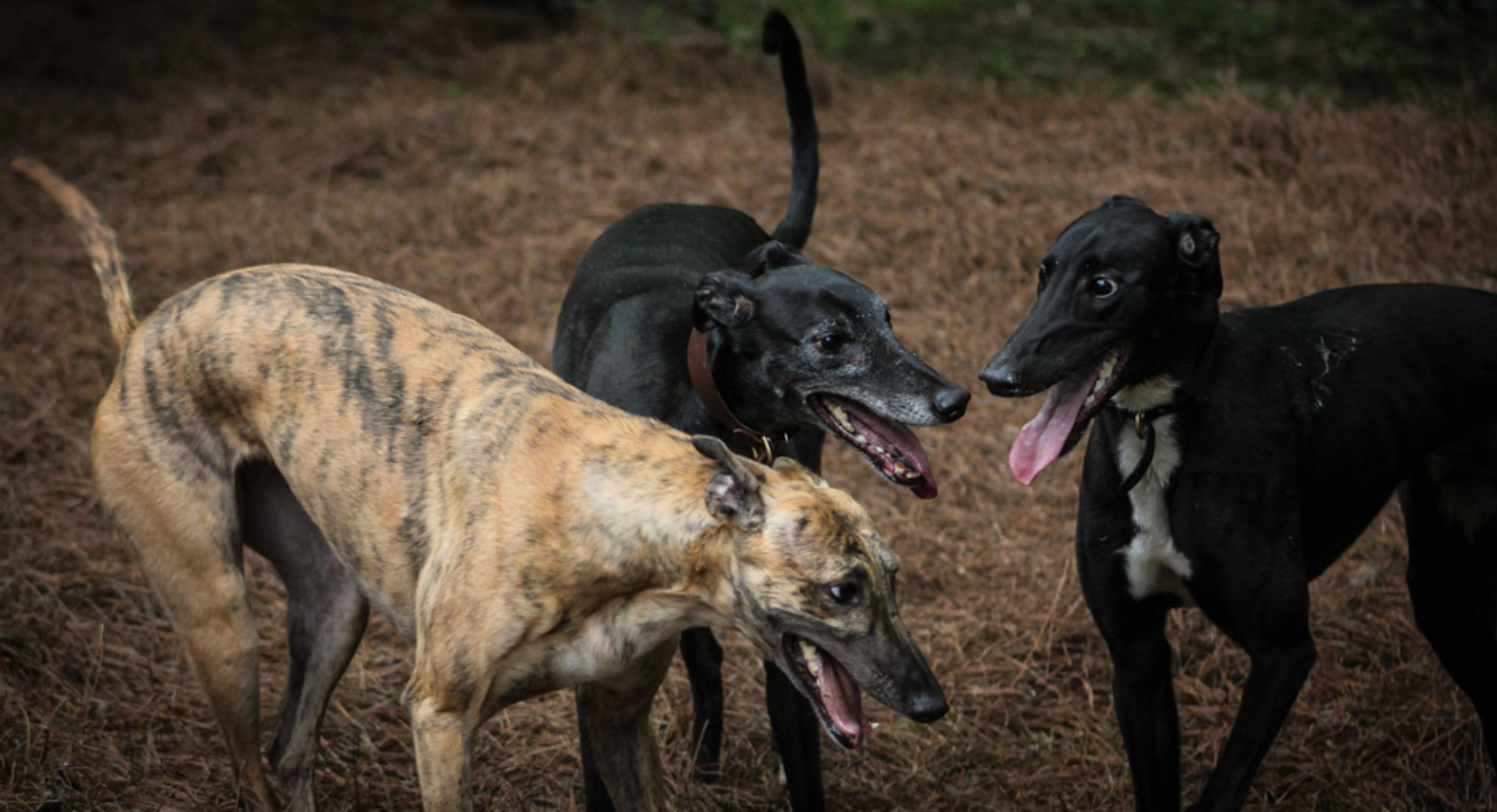One of the best parts of greyhound ownership is the lack of grooming they require. Greyhounds are wash and wear dogs. They do not need a lot of brushing, trimming, or bathing. However, their nails do need some attention.
First things first, what is a nail? The nail is protective covering of the bones and vessels under the tip of the foot. Nails are made up of a strong fibrous protein called keratin. This protein is also found in skin and hair. Nails protect the tip of the foot from damage and help with gripping while running.

So what happens if your greyhound’s nails are too long? Well, multiple issues can occur. The most concerning issues are the changes to the gait associated with long nails. When the nail is touching the ground this puts pressure on the bones of the foot.
Remember the old saying about greyhounds? “A greyhound should be headed like a snake and necked like a drake, backed like a beam, sided like a bream, footed like a cat and tailed like a rat”. This poem should be taken to heart when thinking about the greyhound foot. When the nails of the hound are too long it creates an uneven balance of pressure in the foot. This pressure lengthens the ligaments in the foot causing the toes to appear longer and the dog to not walk properly. This can also be painful.
Pressure sores or decubitus ulcers can also occur with overgrown nails. The overgrown nails come in contact with the thin skin of the foot and can cause breakdown. This can lead to infection and can be very painful to the dog. Pressure sores are difficult to heal. The offending agent or pressure has to be removed so that the wound can heal properly.
You can see why nail care is important but what do you need to trim nails? I recommend plier-style clippers with a safety stop. I find that guillotine clippers are difficult to use. Guillotine clippers do not give you the control of the scissor clipper. It is also more difficult to see what you are doing while trimming the nails. You should also buy septic powder. This is good to have on hand in case you do nick the nail quick. Remember to hold pressure to stop the bleeding as best as you can then apply this. Septic powder works best on dry surfaces. Grinding tools are also useful tools to have in your nail bag. They can file the nail down and if you are worried about the quick there is no clipping involved. I would recommend grinding nails outside and with a mask on and eye protection. Also move the tool over the nail as it will heat up. Continued pressure in one spot will heat the nail and can be painful to the greyhound.
So you have your tools but how do you successful clip greyhound nail? I understand that nail clipping can be scary. We know all too well that there is a sensitive quick in the nail and clipping it can cause bleeding and pain for the dog. Well friends, I have news for you. If you look at your hound’s foot you can easily spot the quick even on black nails.
Once you know where the quick is you make you first cut at about 45-60 degrees. I recommend then making two additional cuts to the side of the nail to make sure you have removed all the overgrowth. Once this is completed you can file the nail with an emery board or grinding tool. A rule of thumb for nail length is that you should be able to slide a credit card under the dogs nail while standing


Most retired racers are well accustomed to nail clipping as this was a regular part of their routine. However, if your hound is not so cool with the idea of clippers coming close to their toes some positive reinforcement could help. I find that using a plastic toy stuffed with food will keep a hound busy while clipping. The clicker could also be used for this. Creating a positive association with the clipper can be helpful with a lot of dogs. Remember to channel your inner leader while nail clipping, dog can sense if you are not confident in your skills. Getting you and your hound accustom to nail clipping can take some time but well worth the effort!
I hope that this has been helpful to you and you now ready to clip you hound’s nails with confidence!




















